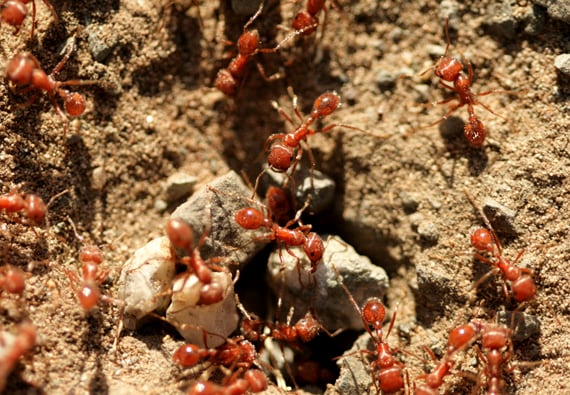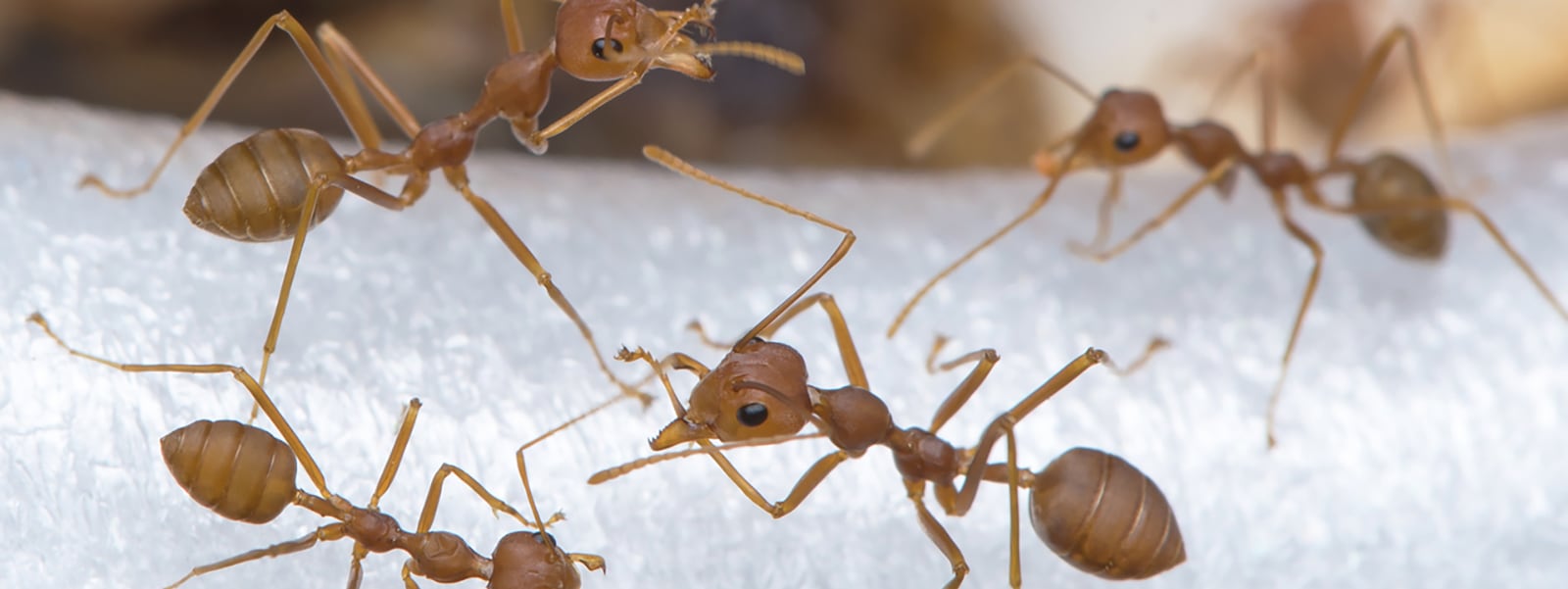“The ants go marching one by one, hurrah, hurrah…”
Actually, if this song were about red imported fire ants, the lyrics would say “go stinging one by one.” Fire ants sting humans by sinking their mandibles into the skin and swinging their abdomens around to inject venom. This venom serves a purpose: when used against prey, it can kill or paralyze. When injected into humans, the toxic alkaloids produce an immediate burning sensation at the entry site. A swelling soon appears and a blister forms. Within a short amount of time, the blister fills with pus. Venom begins to break down cells and tissues. Reaction to the venom may include nausea and vomiting, disorientation, dizziness, asthma and anaphalaytic shock. Usually the sting simply gets itchy and irritated. Less than 5% of people stung experience systemic anaphylactic reaction, which can be fatal.
No wonder it sounded like a good idea when Congress initiated a cooperative federal and state program in 1957 to eradicate red imported fire ants from 126 million acres…at a cost of $200 million over a 12-year period.




